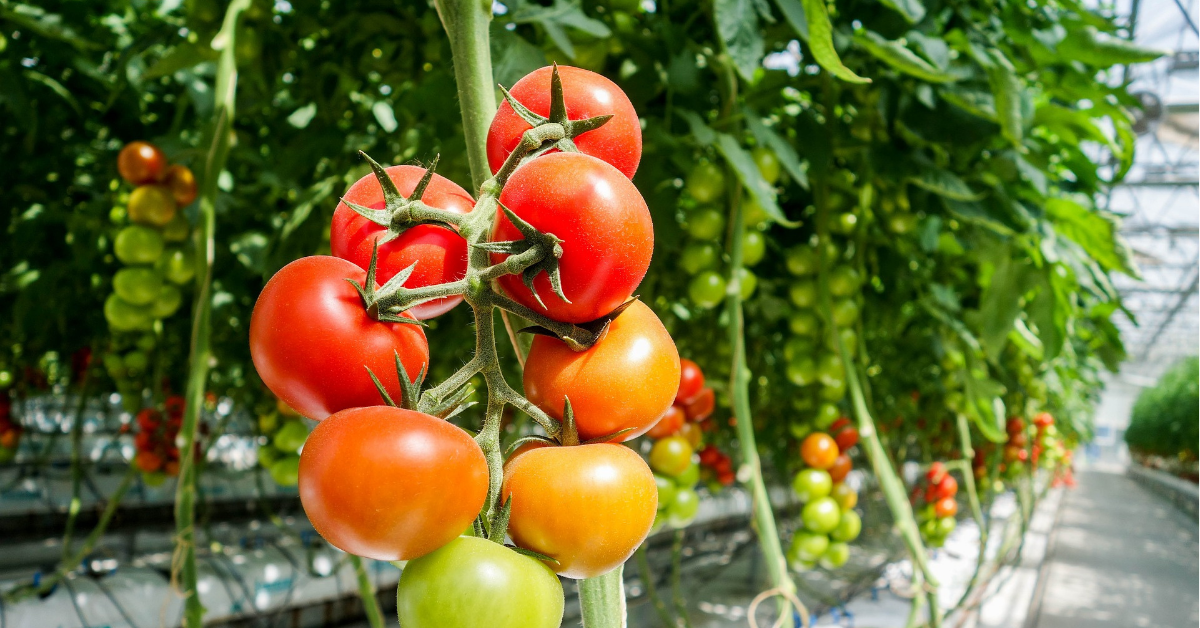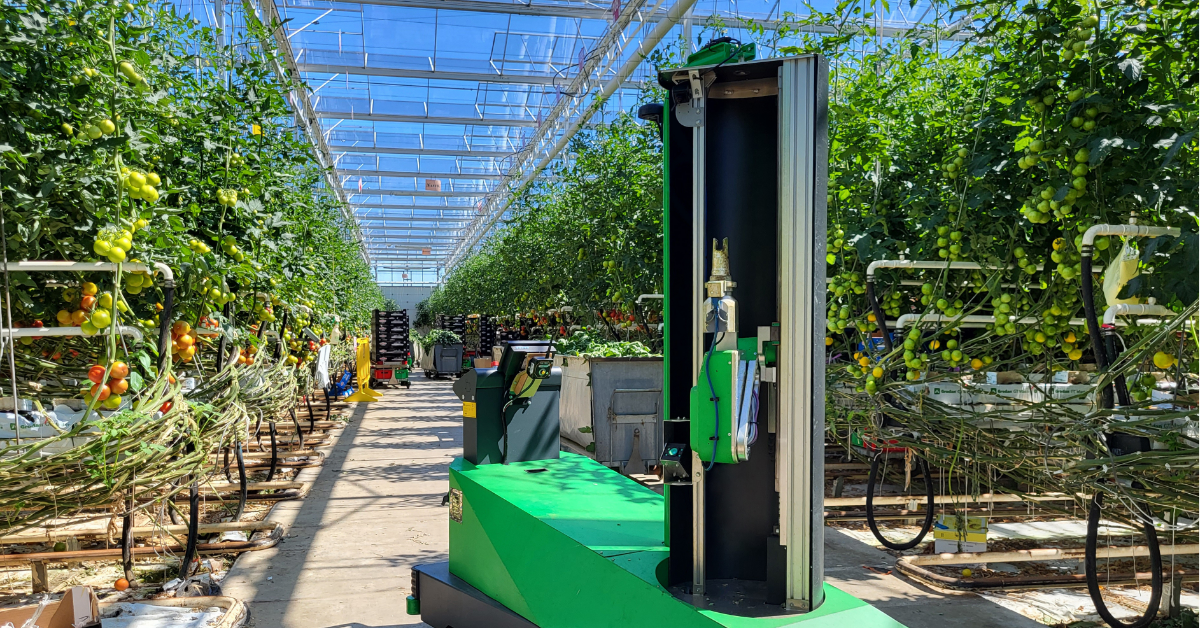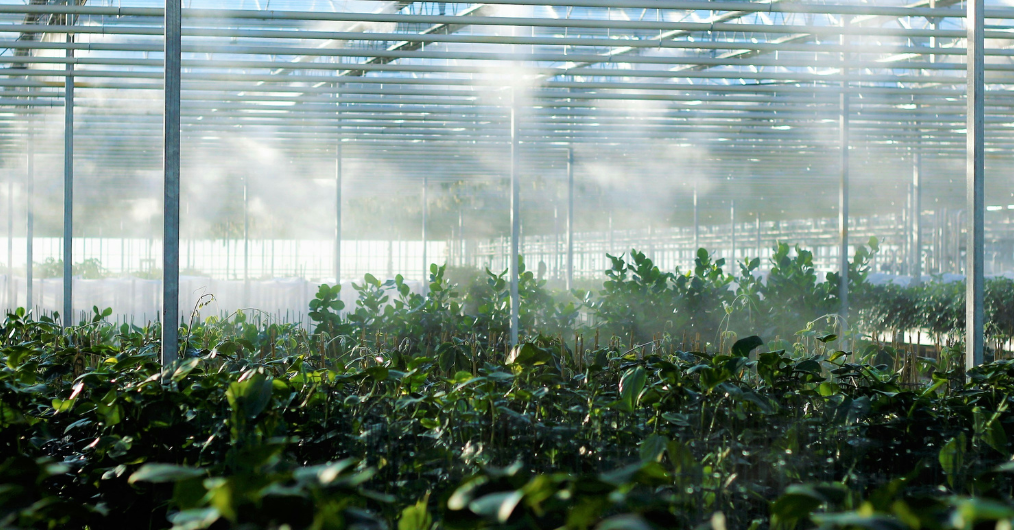'Joint responsibility in making energy more sustainable'
Division Q is a spin-off of Koppert Cress, a company that produces, among other things, sprouts. The Dutch company has been known for years for its innovative approach, both in terms of product range and processes. “We want to make our products as sustainable as possible purely from an intrinsic motivation. For example, we were one of the first to use LED lighting in the greenhouse and we already do a lot with soil energy, solar energy and aquathermal energy," says director Bart van Meurs of Division Q. He refers to a prestigious prize, the Koning Willem I Plaquette, that Koppert Cress won in 2006 for 'most sustainable company in the Netherlands.' “At a time when horticulture is sometimes approached critically, this was also a great boost for the sector as a whole. And that immediately became the bar for us, where the question was: what will be our next step?”
That step became the establishment of Division Q, which stimulates technical innovations to make the greenhouse horticulture sector even more sustainable. “We have already worked a lot with startups, but with Division Q we want to be a testing ground for new sustainable developments.” The company does this by working even more closely with startups and offering them the space to test their products in practice. “We have the objective within our company to, among other things, reduce the use of fossil fuels and we want to achieve this quickly. You cannot do that without innovation. With Division Q we want to give people with good ideas a chance and help them move forward. If a great opportunity arises to actually make an impact in the sector, we will also act as an investor.”
Move forward
Koppert Cress has always been at the forefront when it comes to innovation. According to Van Meurs, this ensures that you as a company are future-proof. “And in the event of an energy crisis, for example, it also makes you more agile as a company. At the time when gas prices were extremely low, we sometimes wondered whether all those investments in sustainable energy were worth it. But when prices shot up in recent years, we definitely reaped the benefits and were confirmed that we made the right choices.” Although the goal is not so much to be proven right, Van Meurs indicates. “The most important thing is that the sector must move forward, so that horticulture continues to exist in the future. We would love to continue with geothermal energy, but you can't do that alone. So, we really feel that as horticulture we have a joint responsibility in making energy management more sustainable.”
The aim to become less dependent on fossil fuels led Koppert Cress to use more and more residual heat flows. “How can you heat the greenhouse with the lowest possible heat? Do you send water at 60 degrees or 30 degrees to your greenhouse? That second option is not necessarily easier, but it does offer more opportunities to become more sustainable. By combining this with heat-cold storage, where you save the heat from the summer for the winter, we have been able to make major progress. This has, as it were, become the capstone for more developments, such as water-cooled LEDs, the rollout of aquathermal energy and the linking of even more residual flows.” Van Meurs also mentions solar energy, which actually harvests the sun to heat the greenhouse. “There is enough solar energy for cultivation all year round, but not always at the right time. With our Hortizon solar collectors we now have a tool to store that heat and use it when necessary.”

Heat batteries and hydrogen
Division Q continues all these previous developments, but the company has also defined four tracks: reduction of fossil fuels, packaging and transport, the greenhouse as an instrument and water. Looking at the theme of energy, Van Meurs mentions two developments in particular that he believes in. “We are working on heat batteries, facade panels that store the heat of the day for the night and with which we hope to save 10 to 20 percent energy. We are also looking at hydrogen. I don't see that so much as a holy grail for horticulture, but we have turned the philosophy around. Because if we produce hydrogen, we also generate residual heat. That is an important raw material for us. By using the residual heat and selling the hydrogen, it is a win-win. It’s literally: refuel at the grower!”It turns out that startups know where to find Division Q. “Parties trying to find their way in horticulture quickly come to us. That is very positive and it gives us a good idea of what developments are taking place. We will then work together with those startups to test products and roll them out further where possible.” This testing is initially done at Koppert Cress. “We are in fact their first customer, but after that the intention is of course that valuable innovations will be applied more widely within the sector. I firmly believe in collaboration and openness to help horticulture as a whole. That is why we also offer various solutions in partnership with other companies. So that we can work together to make energy consumption in horticulture even more sustainable.”
Below, we highlight two startups that Division Q is working with:
SKYTREE: CO2 FROM THE AIR
Skytree has developed a Direct Air Capture (DAC) system to filter CO2 from the outside air on a large scale and then use it in the greenhouse. The modular Skytree Stratus can generate up to 1,250 kg of CO2 per system per day and by combining multiple Stratus systems into a 'Skytree Stratus Hub', every need can be met. “The Stratus filters CO2 from the outside air and uses the CO2 to increase crop yields. Furthermore, the innovation is designed to optimally integrate with the available energy sources,” the company says.In addition to electricity, the Stratus also uses available heat from the location itself, such as geothermal energy or electric boiler, which reduces the need for electricity. The aim is to eventually bring the energy consumption of the Stratus below 1 kWh per kg of CO2 generated, as a result of improved sorbents, the material to which the CO2 molecules attach. These improved sorbents will be available for new systems, but also as an upgrade for already installed systems. The Stratus is the second decentralized DAC system that Skytree has launched on the market in a relatively short time. The Skytree Cumulus for small-scale applications was introduced in the autumn of 2023. This was recently tested in practice by Division Q in preparation for a larger-scale application of Direct Air Capturing at Koppert Cress.
PHOTONIQ: SPRAY COATING
Fotoniq developed PAR+, the first sustainable spray coating in horticulture, which significantly reduces the waste streams of seasonal coatings. The startup is a high-tech spin-off from TU Delft with developers from all over the world. PAR+ is a sprayable coating that provides diffuseness in the greenhouse all year round without loss of growth light. It offers an even horizontal and vertical light distribution, so that the light is better spread over the crop. Sunlight reaches deeper into the crops and the coating reduces crop stress and temperature fluctuations in the greenhouse. This results in more class 1 products and increased crop growth. In addition, the grower has the option of leaving the screens open longer and windows closed, which retains humidity and CO2 for optimal growth.PAR+ adds value during all seasons; there is no need to apply and remove seasonal coatings, the company said. “That saves costs and hassle and results in at least ten times less waste material over the life of the coating. The positive impact of PAR+ also offers the opportunity to adapt the lighting strategy and reduce the amount of photosynthetic photon flux (PPF) from LEDs, thereby saving on electricity costs.” Division Q was the first to test PAR+ in practice and has now coated a department of 1,000 m2.
Have exclusive horticulture technology news delivered to your inbox
The GreenTech monthly newsletter brings you the latest exclusive horticulture technology news and updates about our global horticulture technology trade shows and events.
Join over 32,000 of your peers and receive:
☑ Exclusive commentary from industry leaders
☑ The latest news from the GreenTech team
☑ Stay up to date with all the latest news about our events





